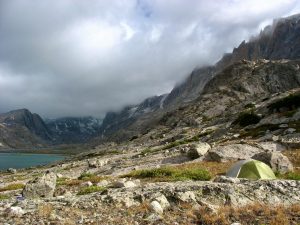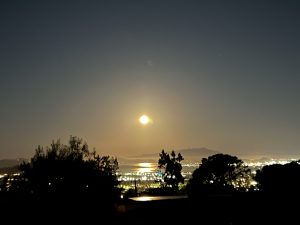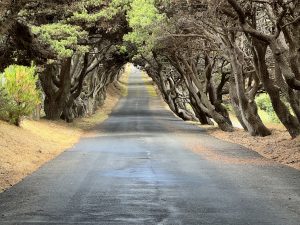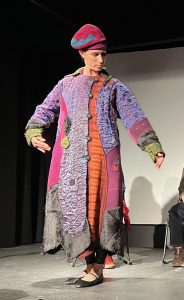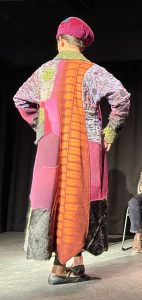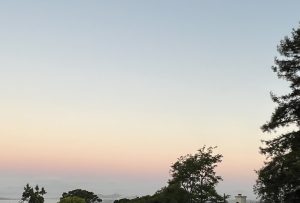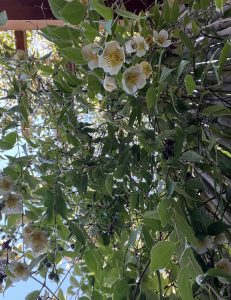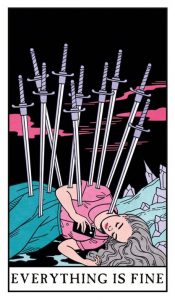This document is copied from one sent to every household in Finland. Because of their proximity to Russia, Norway and Sweden are also doing this. But we have our own sources of disruption and this a good tool for thinking and planning. Among the differences between this document and similar ones is that this one addresses issues such as functional capacity, hybrid influence activities, and cyber attacks. What a world! The last sentence in the document says something like: The competence and activities of individuals in community form the basis for society’s ability to act when something extraordinary happens.
This checklist contains the most important instructions on how to prepare for incidents and crises and how to act during different situations.
What is preparedness and why is it important?
Personal preparedness
- means preparing for different incidents, crises and emergency conditions
- affects how well you, your loved ones and society will cope with an extraordinary situation
- consists of home emergency supplies, knowledge, skills, functional capacity and a sense of community
- does not mean that you think something bad will happen.
How are incidents reflected in day-to-day life?
Incidents are situations in which the vital functions and services of society do not function as usual.
Lengthy incidents affecting large areas particularly interfere with the normal functioning of people’s everyday lives and society.
Incidents include:
- power cut
- water outage or water contamination
- disruptions in communications infrastructure
- disruptions in payment and banking services.
Basic knowledge and skills help you cope with many situations
You will cope with many situations when you:
- Stay calm.
- Think about what the situation involves and which instructions you know are related to it. How does the situation affect you, your loved ones and the people local to you?
- Follow official communications and emergency warnings.
- Follow the instructions.
- List the most important things to do in the situation and take action.
- Help others to the best of your ability.
Home emergency supplies checklist
Home emergency supplies checklist:
- bottled water and clean containers with lids for storing water
- ready-to-eat and easy-to-cook foods that you use in your regular everyday life
- radio operating on batteries or otherwise without mains electricity
- a flashlight or some other lamp operating on batteries or otherwise without mains power
- a charged backup power supply
- essential medicines that last you a little longer
- iodine tablets if there is someone in your household in the target group for the iodine recommendation (people at most 40 years old, pregnant or breastfeeding)
- hygiene supplies that allow you to stay clean without water
- a small amount of cash (different denominations)
- duct tape for sealing windows and vents
- also enough food and water for your pets
Also remember the following:
- Get sufficient knowledge and competence.
- Do not lose your head when getting the supplies if there is an incident.
Read more about home emergency supplies
Pay attention to functional capacity in preparedness
Learn aspects can affect functional capacity. These may include ageing, disability or illness.
Use the following questions to think about which arrangements enable your or your loved one’s preparedness:
- How will the incidents specifically affect your everyday life?
- What restrictions should be taken into account?
- What can you do yourself and where do you need help from others in various situations?
- Who could help you the quickest if something happened?
- Should you improve your safety net?
Hybrid influence activities may cause disruptions
Hybrid influencing refers to harmful activities involving a wide range of methods which foreign states use to cause a detrimental effect on the target country.
For people, hybrid influence activities usually manifest as ordinary disruptions, such as service interruptions, or they may not be visible at all. If hybrid influencing succeeds, it may manifest itself in people’s lives, for example, as a loss of trust or an increase in fears and polarisation.
You do not have to separately prepare for hybrid influencing as such, but rather make sure you are prepared for incidents.
Information influence activities undermine the functioning of society
Information influence activities refer to harmful activities involving a wide range of methods, typically conducted by a state actor. The aim is for people or society to act against their own interests.
A person sharing their views or official communications are not examples of information influencing.
Read more about information influence activities
Protect yourself against disinformation and information influence activities
In protecting yourself against disinformation and information influence activities, it is important to
- identify the topics through which it can be the easiest to appeal to your thinking and emotions
- identify how situations and issues affect your feelings and thoughts.
Think about
- which issues cause concern or stir strong emotions in you or scare you, for example
- how you regard incidents that upset or anger you and what kind of behaviour do they cause in you
- does the way you look for information during a crisis support or reduce your wellbeing
- what cognitive biases may affect the way you receive and process new information.
Look for more detailed instructions for protecting yourself against disinformation and information influence activities
Do not provide visibility for false information
- Check where the information originated.
- Do not share any information you are not certain about.
- Base your assessment of reliability on the facts of the content.
- Do not share content that you know to contain incorrect information.
- Think about why a discussion is occurring before reacting to content.
What are epidemics and pandemics?
An epidemic refers to a situation where a communicable disease occurs more than normally in the people of a certain area.
A pandemic is a situation in which an epidemic spreads geographically over a large area, for example across continents.
Can I prepare for pandemics?
To prepare for a serious health threat, it is a good idea to know how it could affect your everyday life. Each pandemic situation is unique and requires appropriate measures.
The authorities will tell you if you need to take special measures due to the disease situation.
Do this in the event of a pandemic
The most important thing is to follow the instructions and recommendations of the authorities and healthcare.
The best way to prevent the spread of infectious diseases and people falling ill is by ensuring good hygiene and vaccinations.
What are cyberattacks and cyber incidents?
Society depends on information systems. Related disruptions therefore have a great impact on the functioning of society and everyone’s day-to-day life. During an incident or attack, the services do not function normally.
Attacks on organisations or societal functions are particularly prone to cause extensive incidents.
Prepare for cyberattacks
Be prepared that cyberattacks may affect your everyday life:
- your network and telephone connections may be interrupted and power may be cut
- card payment and online banking services may be disabled
- official services or websites cannot be accessed.
You should also be aware of the risk of data breaches and leaks. It is important that you protect your data well.
See more detailed instructions on preparing for cyberattacks
Protect yourself against cyberattacks
- Make sure that your accounts and services have strong passwords and use multi-factor authentication.
- Install device updates and protect your devices against viruses, for example.
- Use several electronic identification devices.
- Act securely in online services and also pay attention to information security at the workplace.
See more detailed instructions on how to protect yourself against cyberattacks
What are natural phenomena and major accidents?
Natural phenomena and major accidents include:
- storms and floods
- wildfires and major building fires
- accidents involving dangerous substances
- radiation hazards
- other high-risk unforeseen events.
How people are alerted of the hazards
Approaches for issuing immediate hazard warnings include:
- Emergency warning
- General alarm signal
Early warnings may be given of weather phenomena that pose a significant risk, such as storms. This helps prepare for them and therefore reduces the damage caused.
Why should you prepare for storms and floods?
During a storm, strong winds and especially gusts of wind cause damage.
Flood water can cause damage as the water rises in a built-up area due to sudden heavy rainfall, rising sea levels on the coast or rapid melting of snow cover.
Prepare for storms and floods
Storms:
- Follow the weather reports and warnings in your area.
- Think about the risks that may arise in your environment during a storm and use this as the basis for preparing.
- Take precautions by having home emergency supplies and necessary goods.
See more detailed instructions on preparing for storms
Floods:
- Find out if you live in a flood hazard area or if an urban flood can affect your residential area.
- Follow the weather reports and warnings in your area.
- Take precautions by having home emergency supplies and necessary goods.
See more detailed instructions on preparing for floods
Do this during a storm or a flood
Storms:
- Stay indoors.
- Follow the communications of the rescue department in your area.
- Do not call the emergency number unless the storm poses an immediate risk of accident or death.
See more detailed instructions on what to do during a storm
Floods:
- Protect your assets from flood damage.
- Make sure you are safe: do not go to flooded areas or enter flood water.
- Follow the instructions given by the rescue department and the authorities in your area.
- Move away from the area or go to the upper floors of your building.
See more detailed instructions on what to do during a flood
Why should you prepare for wildfires and building fires?
Fires can pose a major risk to life, health and property. Toxic combustion gases pose the greatest threat to health.
You can prevent the risk of fire through your actions:
- Exercise caution whenever handling fire and using electrical appliances.
- Identify potentially hazardous situations and take risks into account.
Prevent and prepare for wildfires and building fires
- Wherever you are, make sure your behaviour does not pose a risk of fire.
- Be careful whenever dealing with live fire.
- Do not light a fire if there is any risk that it may get out of control.
Do these:
- Make sure your smoke detectors are in order.
- Learn first-aid extinguishing skills.
Follow these steps if you notice a fire
- Report the fire to the emergency number 112.
- Try to extinguish the fire if it can be safely done.
- Warn and help others and save yourself.
Remember that breathing combustion gases is dangerous.
See more detailed instructions:
The spreading of hazardous materials into the environment
Hazardous materials could end up in the environment because of an accident, for example. Chemical substances can cause a variety of symptoms.
Remember that it is often impossible to identify hazardous materials based on your senses. If there is a warning of hazardous material, follow the instructions given by the authorities even if you do not notice the hazard.
Do this if a hazardous substance is spreading to the environment
If hazardous material is spreading in the area, a general alarm signal and an emergency warning are used to warn people.
- Seek shelter indoors and stay indoors until you are informed that the threat is over.
- Follow the instructions given by the authorities in emergency warnings.
If you are in a location where a presumably hazardous substance is being released into the environment:
- Protect your respiratory tracts and walk away from the area.
- Call 112 for help.
- Follow the instructions given by the authorities.
Radiation hazard
Situations involving radiation hazards may include:
- a serious accident at a nuclear power plant in Finland or in nearby areas
- an accident in the transport of radioactive material
- the use of a nuclear weapon in Finland or nearby areas.
The release of radioactive material into the environment depends on what has happened and the weather in the area.
If a radiation hazard occurs, the rescue department in your area will inform you with an emergency warning and give instructions.
How to prepare for a situation involving a radiation hazard
- Learn how to seek shelter indoors with your loved ones.
- Know the alarm methods: an alarm signal and an emergency warning are used to warn people of the radiation hazard.
- Know which communication channels are used: the 112 application, television, radio and the websites of the authorities.
- Know the authorities providing instructions: rescue department in your area, Radiation and Nuclear Safety Authority (STUK).
- Buy medicine iodine tablets at home according to the recommendation.
In the event of a radiation hazard
If there is a radiation hazard in the area, a general alarm signal and an emergency warning are used to inform people.
If this happens, do as follows:
- Seek shelter indoors and stay indoors until you are informed that the threat is over.
- See and follow the instructions given by the authorities in emergency warnings.
Seeking shelter indoors
Learn how to seek shelter indoors with your loved ones.
Follow these steps if you hear the general alarm signal or the emergency warning prompts you to seek shelter indoors:
- Go inside your home or the nearest indoor space.
- Follow the authorities’ emergency warnings and act according to their instructions.
- Stop ventilation and seal any openings from which air can flow into the interior space.
- Seek shelter indoors until the authority reports that the situation is over.
How do I prepare for disruptions in payment services?
Prepare for disruptions in payment services:
- Keep a small amount of cash at home.
- Prepare with home emergency supplies.
- Have the cards of two different banks.
- Use several strong identification methods.
See more detailed instructions on preparing for disruptions in payment and banking services
What should I do during a disruption in payment or banking services?
- Follow the information provided by your bank about the situation.
- Find out if you have cash or if some other method of payment works.
- Use your home emergency supplies.
See more detailed instructions on what to do during disruptions in payment and banking services
Preparedness for military threats and civil defence
Preparedness and the maintenance of defence aim to create a preventive restraint to avoid a military threat to Finland. There are many ways to prevent threats and if threat prevention fails, any attacks will be countered by military defence.
Preparing for civil defence is a statutory task of the authorities. Civil defence means that civilians are protected from the effects of war and the conditions for survival and safeguarding society’s functional capacity are ensured.
National defence belongs to everyone
In the event of an armed attack on Finland, Finland would defend its region, population and society, making full use of its resources.
National defence includes
- the capacity of civil society to act during emergency conditions
- armed defence
- the duties of persons liable for non-military service
- voluntary defence.
The national defence obligation applies to all persons aged 18 or over but under the age of 68 living in Finland. They could be assigned tasks according to each person’s abilities.
Civil defence shelters and evacuation
Civil defence shelters are prepared for use and used to seek shelter if so ordered by the rescue authorities.
Find out about the practices for seeking shelter in a civil defence shelter that apply to you from
- your housing company’s rescue plan
- your workplace’s emergency plan
- your municipality’s services.
Read more about sheltering in civil defence shelters
Evacuation is not always necessary even in war conditions.
- Evacuation is carried out if other civil defence measures are insufficient for protection.
- The authorities will provide information and instructions if it is necessary to leave the area.
Read more about evacuations
Your role during a military conflict
- In the event of a war, conscripts who have completed military service and persons liable for non-military service would carry out their duties in accordance with their training and competence.
- Civilians would have more responsibility for maintaining the functioning of society, and they would be obliged to participate in tasks that meet their abilities.
Read more about what your role would be during a military conflict
Prepare for long power cuts
- Prepare with home emergency supplies.
- Learn the skills you would need to operate without electricity.
- Get a lamp that runs on batteries or without mains power.
Access to information:
- Enable your power grid company’s disruption notifications for your area if available.
- Make sure that you know how to get information about the situation during a prolonged power cut. In the event of a prolonged power cut, the telecommunications and mobile networks will cease to function.
- Get a radio that runs on batteries or without mains power.
- Discuss with your loved ones what to do if you cannot contact each other.
See more detailed instructions on preparing for power cuts
Do this during a power cut
- Switch off electrical appliances, especially any heat-generating devices.
- If there is water coming from the tap, collect it into a clean container.
- Do not pour water down the drain or flush the toilet.
- Think about how can keep warm at home.
When the power cut ends:
- Do not start all electrical devices at once.
- Check that no heat-generating appliances are switched on unless used as they pose a fire hazard.
See more detailed instructions on what to do during a power cut
Terrorism causes fear and a lack of security
- Terrorism aims to create fear and make people feel unsafe.
- The authorities work together to prevent acts by addressing the root causes of terrorism.
- The Finnish Security Intelligence Service is constantly monitoring threats.
Do this if you are the victim of a life-threatening attack or a terrorist attack
- If you can, get away.
- If you cannot escape, hide and seek shelter.
- If you are in a safe place, call 112 for help.
Prepare for disruptions in communications infrastructure
- Enable your network and telephone operator’s disruption messaging services.
- Save the customer helpline number.
- Get a radio that runs on batteries or without mains power.
- Discuss with your loved ones what to do if you cannot contact each other.
See more detailed instructions on preparing for disruptions in communications infrastructure
Do this if network and telephone connections do not work
- If possible, check for information about the incident either on your operator’s website or customer service by telephone.
- See your operator’s communications about the situation.
- The authorities provide information on serious incidents on YLE’s channels if other communication channels do not work.
See more detailed instructions on what to do during disruptions in communications infrastructure
Prepare for water cuts and water contamination
- Prepare with home emergency supplies and enough drinking water.
- Reserve clean containers with lids for water.
- Enable your water company’s disruption notifications for your area if available.
- Think about how you would take care of your hygiene without water and prepare based on your needs.
See more detailed instructions on preparing for water outages
Do this when water is out or contaminated
- Follow the communications of your local water utility and municipality.
- If the water has been contaminated, the authorities may provide information about the situation using emergency warnings and official information.
- Use the water you have reserved in your home emergency supplies as your drinking water and take care of your hygiene using the supplies reserved for this purpose.
- Share information about the instructions issued by the authorities and help your loved ones and those living nearby.
When the water outage ends:
- Follow the instructions issued by the water utility and the municipality.
- Run the taps to clean your pipes.
For more detailed instructions, see:
You can prepare for difficult situations
Think about
- how you might react to a crisis?
- which positive actions have previously made you feel better in difficult situations?
- which activities and entertainment could help you keep your spirits up?
- would you or one of your neighbours or loved ones need support or help?
- which services of your municipality and organisations could you contact for help and support?
Read more about coping during a crisis
False information impairs functional capacity
False information and information influence activities may impair your coping and affect your functional capacity.
- Distance yourself from the incident and the flood of information if you feel stressed by the situation.
- Consider whether the amount of information you are exposed to or your media habits support or impair your coping and mental wellbeing.
- Assess how much you may be exposed to false or misleading information and attempts to manipulate your emotions.
Get help and support if you are struggling
Different parties provide online, telephone and face-to-face counselling. A helpline may provide you with advice on who to contact.
Support providers include
- healthcare and social welfare
- church and other religious communities
- non-governmental organisations.
See more detailed instructions for seeking help
Help and participate
You can help improve the collective ability to cope in extraordinary and difficult situations.
- Learn skills that help you and others. Different parties offer training in areas such as first aid, first-aid firefighting, preparedness and national defence.
- Participate in volunteering. As a volunteer, you can contribute to building a sense of community, help others and participate in rescue tasks, for example, during an extraordinary situation.
- Build a sense of community: participate in joint activities and discussions in your neighbourhood, village, workplace and other groups in your area.
- Be prepared to help others. Children and young people, the elderly or other special groups in particular may need support during extraordinary situations.
Read more about how you can help and participate
Safety and a stable society are part of preparedness
When preparing for crises, it is important that people
- trust their own and society’s ability to protect themselves from threats, act in crisis situations and recover from them
- feel that they can influence how safety is achieved for everyone in their living environment
- maintain trust in other people and are prepared to support others
- participate in constructive dialogue with others and democratic decision-making.
Do this in an emergency
- Call the emergency number 112.
- Listen and answer the questions asked of you.
- Follow the instructions given by the emergency response centre operator.
Only call the emergency number in urgent emergencies.
Everyone is obliged to help
Remember that
- everyone has a duty to help if someone is in danger
- a person in need of help may not ask for your help
- just because someone else is already helping the person does not relieve others present of their responsibility to help
- failure to help is a punishable act.
Preparedness in housing companies
Housing companies must prepare for various incidents and crises.
Safety:
- the building has an up-to-date rescue plan
- residents know their responsibilities
- residents are familiar with safety instructions and know how to follow them.
If the housing company has a civil defence shelter:
- it is properly maintained and has the necessary equipment
- the shelter can be commissioned within 72 hours on the order of the rescue authority
- the building residents know how to prepare the shelter for use.
Read more about preparedness in housing companies
Comprehensive security is about cooperation between different operators
Different parties in society cooperate in preparing for and acting during incidents and crises, for example by maintaining the security of supply and assessing risks.
These include:
- national, regional and local authorities
- companies and employers
- organisations and religious communities.
The day-to-day activities of the police and rescue services also lay the foundation for acting during incidents and crises.
The competence and activities of individuals form the basis for society’s ability to act when something extraordinary happens.

